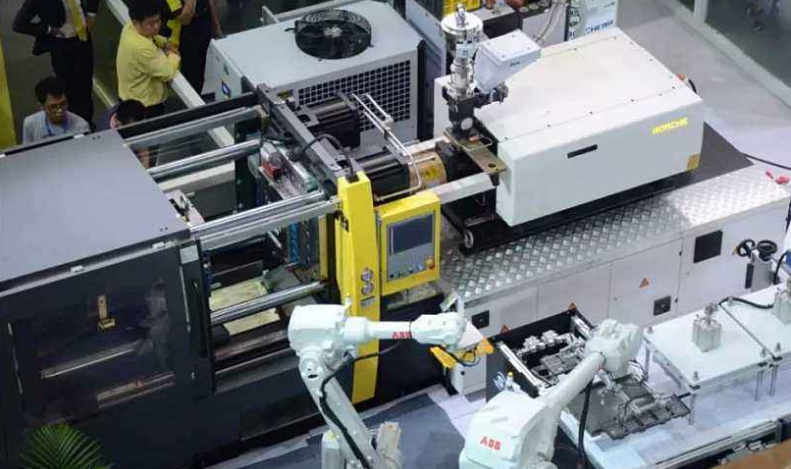Injection molding is a comprehensive process, it is related to the time of each procedure, so it directly affects the thermal process and stress time of polymer solid melt and products, and affects the product quality and production efficiency. The process cycle for injection molding is very short, typically between 2 seconds and 2 minutes, and consist of four stages including clamping, injection, cooling and ejection. The stages in cycle process for injection molding are described in greater detail in this guide.

Process Cycle For Injection Molding
1. Clamping
Prior to the injection of the material into the mold, the two halves of the mold must first be securely closed by the clamping unit. Each half of the mold is attached to the injection molding machine and one half is allowed to slide. The hydraulically powered clamping unit pushes the mold halves together and exerts sufficient force to keep the mold securely closed while the material is injected. The time required to close and clamp the mold is dependent upon the machine – larger machines will require more time. This time can be estimated from the dry cycle time of the machine.
2. Injection
The screw moves forward and extrudes the melt into the mold. The injection phase is divided into injection and pressure maintaining. Injection is to make the melt in front of the screw head advance according to the set parameters. Driven by the screw, the melt gradually fills the mold. As the high temperature melt shrinks in the curing process, it needs to be filled again. This feeding stage is pressure maintaining. The injection time is difficult to calculate accurately due to the complex and changing flow of the molten plastic into the mold. However, the injection time can be estimated by the shot volume, injection pressure, and injection power.
3. Cooling
In this process, the injection molding machine is only responsible for timing, and the cooling water on the mold is responsible for heat exchange. The molten plastic that is inside the mold begins to cool as soon as it makes contact with the interior mold surfaces. As the plastic cools, it will solidify into the shape of the desired part. However, during cooling some shrinkage of the part may occur. The packing of material in the injection stage allows additional material to flow into the mold and reduce the amount of visible shrinkage. The mold can not be opened until the required cooling time has elapsed. Cooling time accounts for the largest proportion in plastic injection molding process cycle, about 70% – 80%. Therefore, the cooling time will directly affect the length of plastic molding cycle and the size of production.
4. Ejection
After sufficient time has passed, the cooled part may be ejected from the mold by the ejection system, which is attached to the rear half of the mold. When the mold is opened, a mechanism is used to push the part out of the mold. Force must be applied to eject the part because during cooling the part shrinks and adheres to the mold. In order to facilitate the ejection of the part, a mold release agent can be sprayed onto the surfaces of the mold cavity prior to injection of the material. The time that is required to open the mold and eject the part can be estimated from the dry cycle time of the machine and should include time for the part to fall free of the mold. Once the part is ejected, the mold can be clamped shut for the next shot to be injected.
How To Reduce Cycle Time For Injection Molded Plastic Parts
Injection molding cycle refers to the time required by the injection molding machine to complete a specific set of actions. Therefore, the action time of each part may affect the whole cycle time. In order to shorten the injection mold process cycle time and improve the production efficiency, each part of the action should be considered separately so as to identify the parts that may shorten the time, so as to save a little time for each part.
